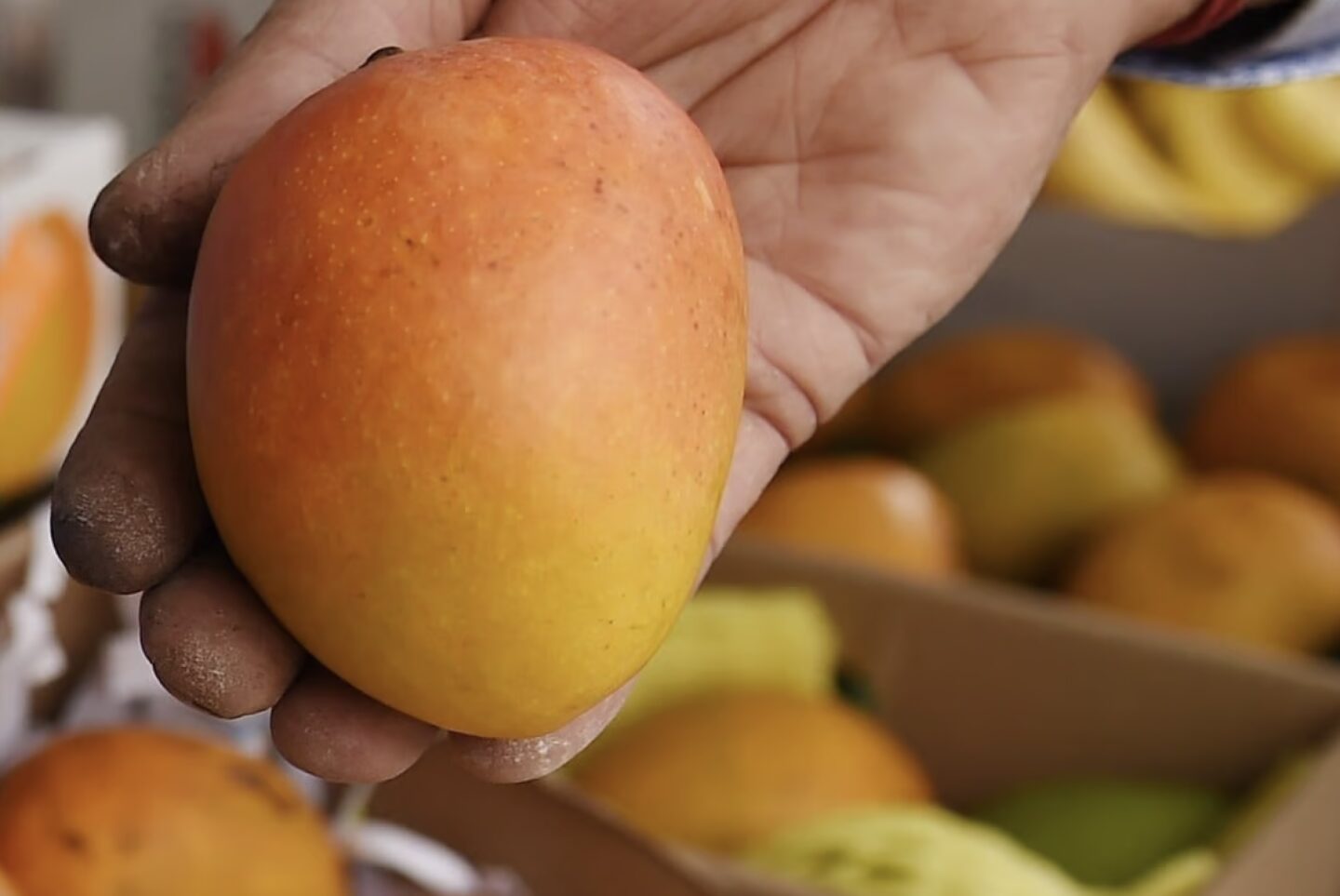Alphonso Yellow

The COLOR CODEX series — to which SEMIOVOX has invited our semiotician colleagues from around the world to contribute — explores the unexpected associations evoked for each of us by specific colors found in the material world.
For midde-class Indians like me, growing up in the 1980s and ’90s meant no malls and no Internet. Just books, underarm cricket (with Maruti cars sporadically threatening to skew lifespan statistics), and street carts and roadside vendors who offered delicacies like chaat, corn on the cob… and an assortment of fruit, most excitingly the Alphonso mango.
In India, the mango is everywhere: in Hindu mythology, our nation’s history, the patriarchal obsession with sex, our culture, our literary metaphors, our tropical love affairs. It’s rooted so deep in our collective unconscious that many Indians of my generation associate the mango with innocence.
Alphonso mangoes have a long connection to the Ratnagiri District (in Maharashtra), and beyond that to Portuguese Jesuits. Personally, they remind me of hot summers in Chennai, the city where I most often spent my summer vacations as a kid. My grandmother would stick a dozen green-speckled Alphonso mangoes in a bagful of uncooked rice, and leave them to ripen for a couple of days. Every summer morning before lunch, I’d stick my grubby paw in, retrieve three or four pieces of fruit and examine them for the perfect orange-inflected yellow which you sometimes catch infusing the sky shortly after sunrise. A quick squeeze to confirm my judgment, and I’d take it to whoever was wielding the aruvamanai in the kitchen. They’d chop the fruit up with the skin peeled some days, unpeeled on others. It was a game to scrape the sweetness clean while scratching the bitter skin as little as possible. The mango would melt in my mouth.
I haven’t actually tasted an alphonso mango in over a decade; my visits back home from the USA are timed all wrong. Meanwhile, USDA regulations and export standards are difficult to meet. Mexican mangoes have mostly muscled other varieties out of the market, here. The sight of a reddish yellow mango at a grocery store makes my heart leap in hope for a second. The disappointment that invariably follows is almost worth it.
Some days it feels like there is more that divides India than what unites us, and that the fabric of our secular nation has been torn forever. But for anyone out there aiming to thread the needle and refashion the patchwork with drive, ambition, and renewed purpose, you needn’t look far for a symbol of unity: the whole country has a thing for Alphonso mangoes.
COLOR CODEX: Martha Arango (Sweden) on FALUKORV RED | Rachel Lawes (England) on DEVIL GREEN | Audrey Bartis (France) on KYOTO MOSS | Maciej Biedziński (Poland) on SKIN-DEEP ORANGE | Natasha Delliston (England) on MARRAKECH MINT | Whitney Dunlap-Fowler (USA) on RESURRECTION CANARY BLUE | Ximena Tobi (Argentina) on VILLA MISERIA BRICK | Aiyana Gunjan (India) on LETTERBOX RED | Lucia Laurent-Neva (England) on TEAL BLUE VOYAGER | Charles Leech (Canada) on STORMTROOPER WHITE | William Liu (China) on PINING GREEN | Ramona Lyons (USA) on GOTH PURPLE | Greg Rowland (England) on LAUNDROMAT FUTURA | Sónia Marques (Portugal) on RUNAWAY BURRO | Max Matus (Mexico) on CALIFORNIAN BLUE | Chirag Mediratta (Canada / India) on AUROVILLE ORANGE | Alfredo Troncoso (Mexico) on BORGES GLAUQUE | Josh Glenn (USA) on TOLKIEN GREEN | Clio Meurer (Brazil) on PARIS LUMINOUS GREY | Serdar Paktin (Turkey / England) on AMBIENT AMBER | Maria Papanthymou (Russia / Greece) on AGALMATOLITE WHITE | Sarah Johnson (Canada) on ARMY GREEN | Vijay Parthasarathy (USA) on ALPHONSO YELLOW | Tim Spencer (England) on ELECTRO-EROTIC COBALT | Adelina Vaca (Mexico) on MEXICAN PINK.
Also see these series: COVID CODES | SEMIO OBJECTS | MAKING SENSE | COLOR CODEX

